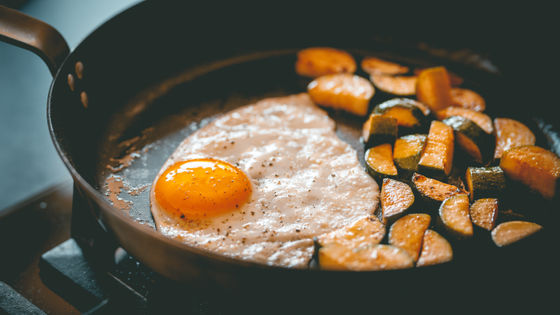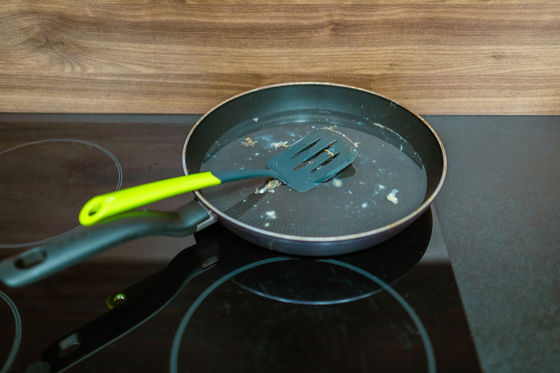Research results show that when a Teflon-treated frying pan is scratched, ``2.3 million plastic particles'' are released into the food

Frying pans coated with
Raman imaging for the identification of Teflon microplastics and nanoplastics released from non-stick cookware - ScienceDirect
https://doi.org/10.1016/j.scitotenv.2022.158293
Not-so-tough Teflon – News
https://news.flinders.edu.au/blog/2022/10/31/not-so-tough-teflon/
One Small Crack on a Teflon Pan Can Release Thousands of Plastic Particles : ScienceAlert
https://www.sciencealert.com/one-small-crack-on-a-teflon-pan-can-release-thousands-of-plastic-particles
Should you immediately throw away a pan when you scratch its coating?
https://www.universal-sci.com/article/should-you-throw-away-a-pan-with-a-scratched-coating
PTFE, which is used in Teflon-coated cookware, is part of a group of substances called perfluoroalkyl and polyfluoroalkyl compounds (PFAS), which are called 'eternal chemicals' because they remain in the environment for an extremely long time. , so there may be concerns about health issues.
Therefore, a research team led by Youhong Tang of Flinders University in Australia conducted an experiment to examine the effects of frying on a Teflon-treated frying pan by exposing it to an environment similar to that used for cooking. I did it.

In the experiment, to simulate cooking, a stainless steel, plastic, or wooden spatula was applied to Teflon-coated cookware and rubbed in a motion similar to cooking. They then used
They found that even a small scratch on the surface of the coating could introduce 9,100 microscopic plastic particles into the food in 30 seconds, and that if the coating was broken, 2.3 million particles could be released. .
Regarding the results of the experiment, Tang said, ``This is a strong warning that it is essential to be careful in the selection and use of cookware to avoid food contamination.'' Teflon is a member of the PFAS family. 'Further research is therefore required to assess the risks of microplastics and nanoplastics.'

Although it is not yet clear what effects microplastics and nanoplastics have on the human body, microplastics are found in various locations within the human body, such as inthe blood, lungs , and even the placenta , which connects the mother and fetus. It is also a health hazard because it remains for a long time without degrading or decomposing.
Therefore, Universal-Sci, a science news site that featured this research paper, urges people to be careful about the following points to avoid introducing 'eternal chemicals' into their meals even when using Teflon-coated cookware. I did.
・Follow the instructions on the cooking utensil instructions.
- Do not overheat the cookware to avoid damaging the coating.
・Do not stir strongly or poke with sharp objects.
・If the surface is scratched or the coating is damaged, discard it immediately.
Related Posts:







